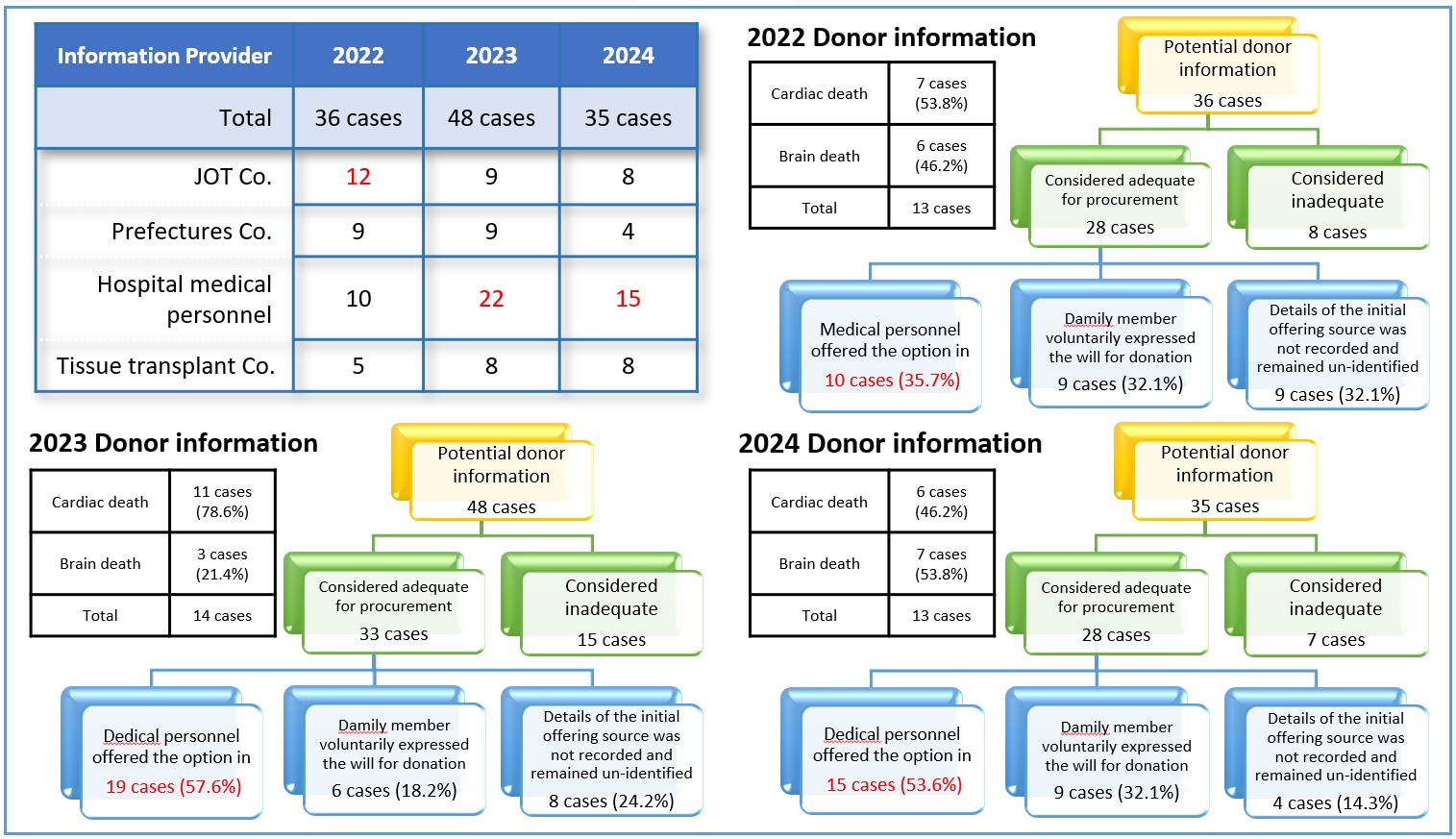Activities and donor trends of the east Japan tissue transplant network (EJTTN): Implications for advancing regional tissue donation
Hiroshi Maeda1, Yuji Sampei1, Hyoe Komae1,2, Akihiko Ichida3, Haruo Yamauchi 2, Nobuhisa Akamatsu3, Kiyoshi Hasegawa3, Minoru Ono2, Sumihito Tamura1,3.
1University of Tokyo Tissue Bank, The University of Tokyo Hospital, Tokyo, Japan; 2Department of Cardiothoracic Surgery, Faculty of Medicine, The University of Tokyo, Tokyo, Japan; 3Artificial Organ and Transplantation Division, Department of Surgery, Graduate School of Medicine, The University of Tokyo, Tokyo, Japan
Introduction: The East Japan Tissue Transplant Network (EJTTN) was originally founded in 1998 as the East Japan Society for Organ Transplantation, preceding the establishment of the Japan Society for Tissue Transplantation in 2000. As a pioneering organization, EJTTN has coordinated the procurement and distribution of tissue grafts in eastern Japan. Since the revision of the Organ Transplant Law in 2010, the number of organ donations has increased, and the subsequent revision of medical reimbursement in 2016 facilitated further system improvements, resulting in an increase in transplant cases. In this context, this study reports recent donor trends and EJTTN activities, aiming to provide insights into the further promotion of tissue donation in the region.
Methods: A retrospective analysis of donor-related information reported to EJTTN during the period of 2022–2024 was conducted.
Results: A total of 119 donor cases were reported during the three-year period, with the highest number observed in 2023 (48 cases). The majority of donor information originated from hospital medical personnel, whose involvement notably increased in 2023. Across all years, approximately 80% of the cases were considered suitable for tissue procurement. The proportion of cases in which medical personnel proactively offered the option of donation increased yearly, reaching 57.6% in 2023. Meanwhile, a consistent portion of cases had no record of the initial offering source. Cardiac death accounted for the majority of donor deaths each year.

Conclusion: This analysis revealed that although the number of donor reports to EJTTN fluctuated over the three-year period, the majority of information consistently originated from hospital medical personnel. Notably, there was a sharp increase in reports in 2023, which may reflect improvements in awareness or institutional systems within healthcare settings.
The growing involvement of medical staff in offering donation options appears to contribute to the early identification of donation opportunities. However, the continued presence of cases with unidentified offering sources indicates a need for stronger documentation practices. In addition, the predominance of donors following cardiac death highlights the broader applicability of tissue donation compared to organ donation, as tissue procurement is often feasible in a wider range of clinical scenarios.
These findings suggest that in order to further promote tissue donation in the region, continuous education for medical professionals, standardized documentation procedures, and appropriate interventions during the early phase of donor identification and clinical decision-making are essential.
[1] Tissue Donation
[2] Cardiac Death
[3] Organ Donation